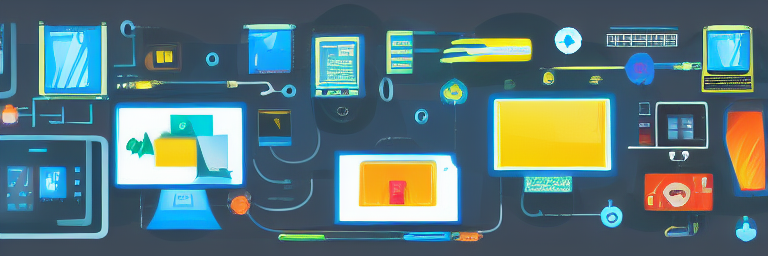What are digital technologies?
Digital technologies are electronic tools, systems, devices and resources that generate, store or process data. They are revolutionizing the way we live, work and communicate. They are providing new ways for us to be creative, connected, and productive. From social media and cloud computing to 3D printing and virtual reality, digital technologies are changing the way we interact with the world.
Digital Technologies Reshaping Our World
Artificial intelligence involves using computers to simulate or carry out human tasks, such as decision-making, pattern recognition, and natural language processing. Some examples of AI technology are: machine learning, natural language processing, robotics, predictive analytics, and computer vision.
Augmented reality technology combines real-world and computer-generated data to create an enhanced view of the world, often using head-mounted displays or smartphone cameras.
Biometric technology is a type of technology that uses human physical characteristics to identify individuals. Examples of biometric technology include fingerprint scanners, iris scanners, and facial recognition technology.
Cloud computing technology allows users to access applications and data stored on remote servers, making it possible to work from anywhere with an internet connection. Cloud computing is growing in popularity, as it can provide businesses with a number of advantages, including reduced costs, scalability, and improved accessibility. For example, cloud-based storage services can be used to store and share data, while cloud-based applications can be used to access software and services from any location.
Voice recognition technology is a type of software that is able to identify and respond to spoken commands. This technology is used in a variety of applications, including voice-activated control of devices and hands-free navigation. Some examples of voice recognition technology are Google Voice Search, Apple Siri, and Microsoft Cortana.
Blockchain technology is a distributed database that allows for secure, transparent, and tamper-proof record-keeping. For example, it can be used to track ownership of assets such as diamonds or cars, or to ensure that votes cast in an election are tallied correctly.
Internet of Things refers to the growing network of physical objects that are connected to the internet and can collect and exchange data. Some examples of IoT technology include: smart thermostats, Smart lighting, smart security systems, connected cars, wearables, and smart appliances.
Gesture control technology is a type of technology that allows users to control electronic devices by making specific hand and body movements. This type of technology is becoming increasingly popular in a variety of electronic devices, including smartphones, tablets, gaming consoles, and even some automobiles.
A Brief History
Digital technology has revolutionized the way we live, work, and communicate. It has made our lives easier and more connected. We can now access information and communicate with people instantly, no matter where we are in the world.
Digital technology has its roots in the late 19th century, when electrical engineer Samual Morse developed the telegraph. This invention allowed people to communicate over long distances using electric signals. In 1876, Alexander Graham Bell invented the telephone, which made communication even easier and more convenient.
The development of digital technology really took off in the latter half of the 20th century. In the 1950s, transistor technology was developed, which led to the creation of smaller and more powerful electronic devices. This laid the foundation for the development of the microprocessor in the 1970s, which revolutionized computing.
The 1980s saw the advent of the personal computer, which made computing accessible to the masses. The 1990s saw the dawn of the Internet, which connected people and information like never before. And the 2000s have been defined by the rise of mobile technologies, which have put the power of computing in our pockets.
Digital technology has transformed the way we live, work, and communicate. It has made our lives easier and more connected. We can now access information and communicate with people instantly, no matter where we are in the world.
The Future Outlook
The future for digital technologies is incredibly exciting. We are on the cusp of new and innovative ways to connect with one another and share information. The possibilities are endless and the potential for positive change is tremendous.
Some of the most exciting advancements that we can look forward to in the future include:
- Increased connectivity: We will continue to see an increase in the ways that we can connect with one another online. This will allow us to share information and ideas more easily and quickly than ever before.
- More personalized experiences: Digital technologies will allow us to create more personalized experiences for users. This could include everything from more personalized content to more targeted advertisements.
- Increased security: As digital technologies become more sophisticated, so too will the ways in which we can protect our online information. We can expect to see more advanced security measures put in place to keep our data safe.
- Greater transparency: The increased use of digital technologies will lead to greater transparency in many different industries. This could help to combat corruption and fraud, and will ultimately lead to a more fair and just society.
- More opportunities for collaboration: Digital technologies will open up new opportunities for collaboration. For example, we will be able to work more easily with people from different parts of the world on joint projects.
The future of digital technologies is bright and full of potential. We are only just beginning to scratch the surface of what is possible. The possibilities are endless and the potential for positive change is tremendous.

